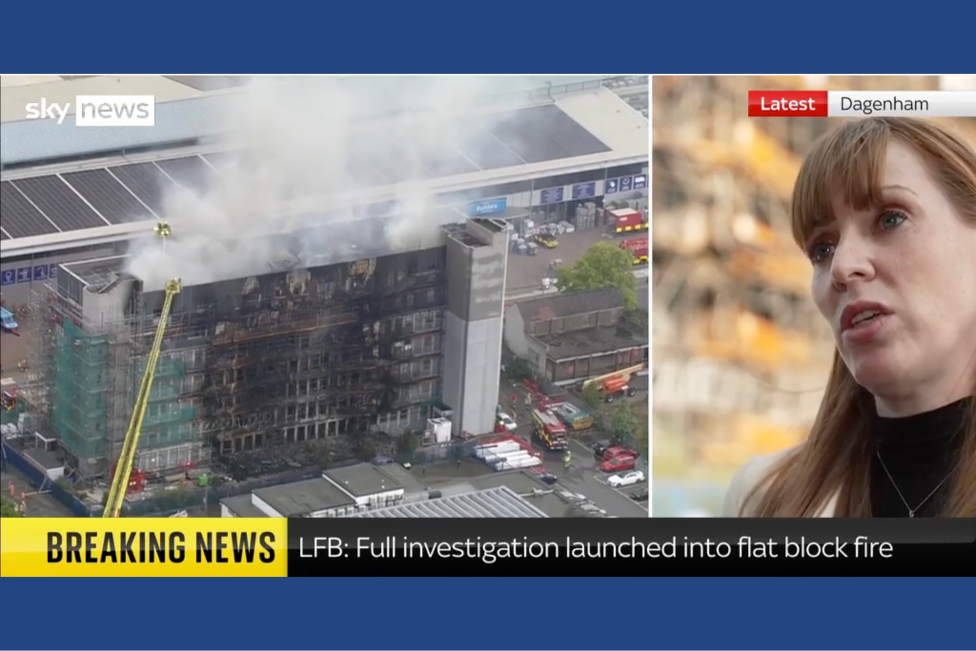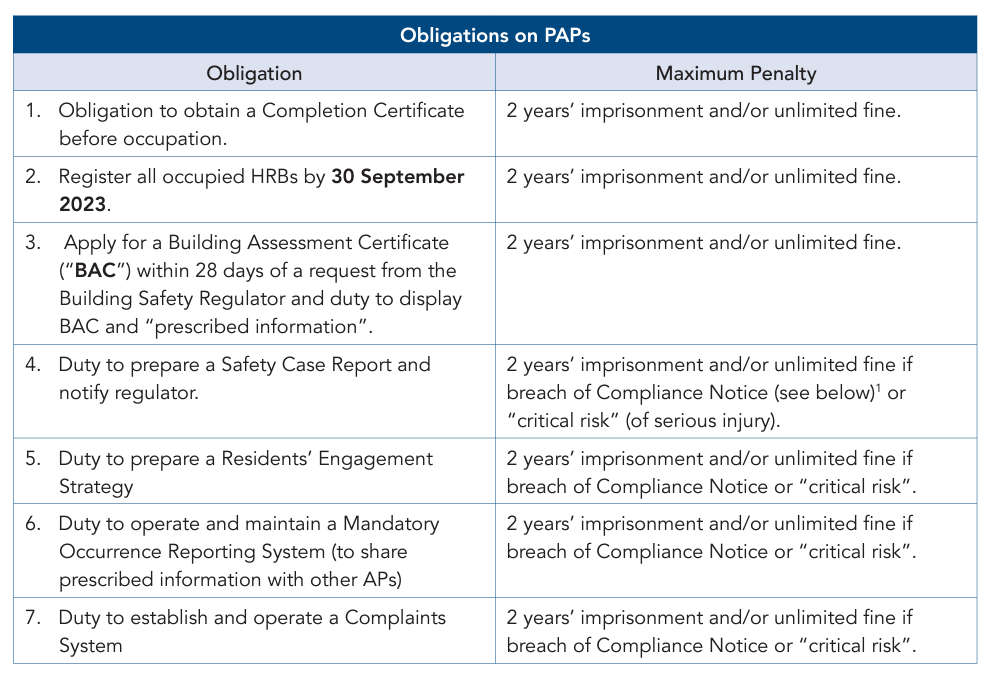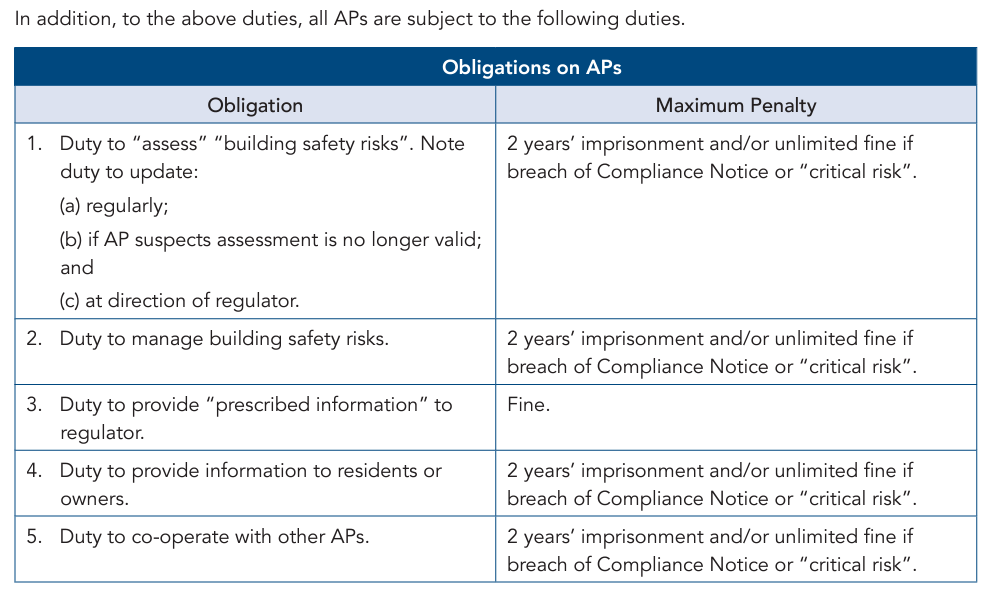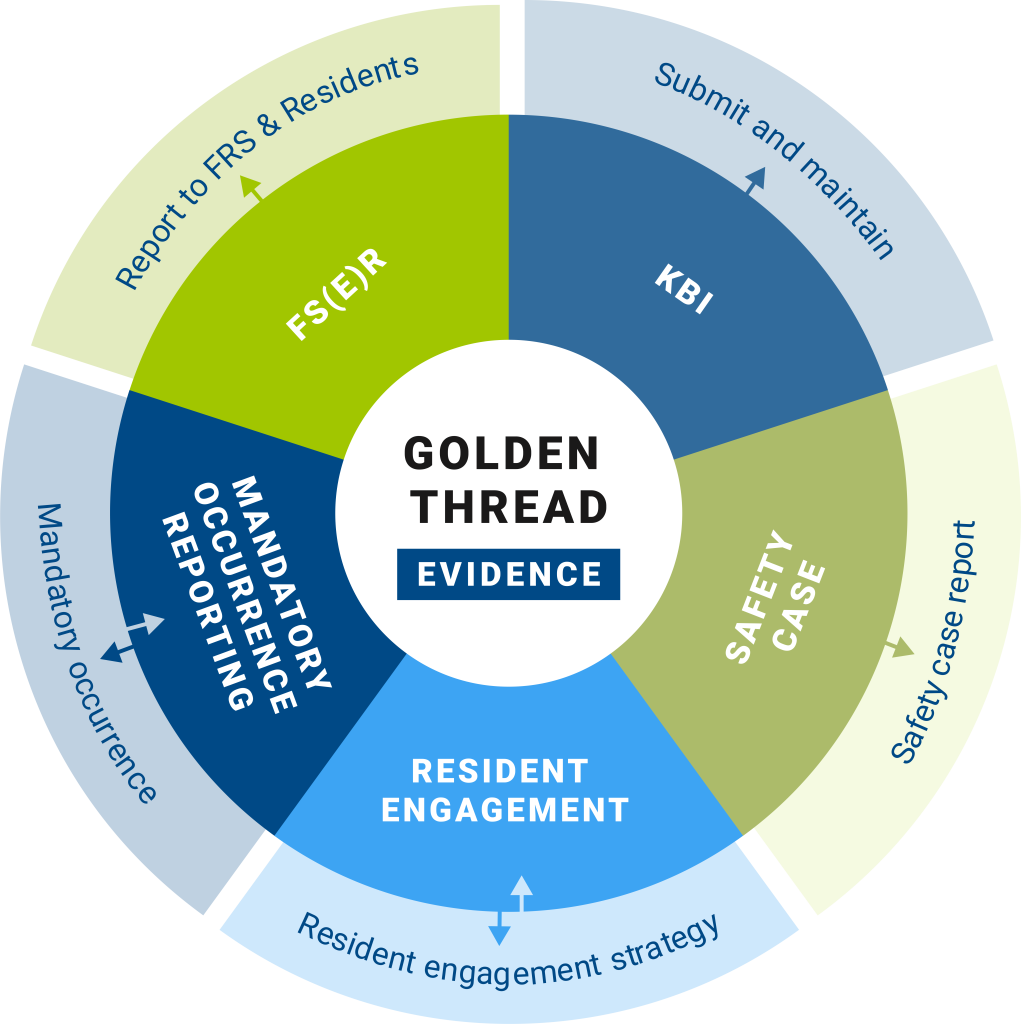Dagenham Fire – what happens next?
It’s now two days since the devastating Dagenham fire at the Spectrum Building. How might the newly empowered Building Safety Regulator exercise its powers of enforcement and prosecution against the legal duty holder, the Principal Accountable Person?

The entire Building Safety Register team send our heartfelt best wishes to all the residents impacted by the tragic events in Dagenham this week. This article is aimed at property owners and property management professionals. We apologise if the tone of this article or its contents cause any distress.
It’s now two days since the devastating Dagenham fire at the Spectrum Building.
The news crews have moved on to new stories, the politicians have visited and thanked the first responders, a Go Fund Me page has been set up for the impacted residents and the fire investigators have started their work on site.
In the measured words of London Fire Brigade Assistant Commissioner Patrick Goulbourne, this incident was a ‘significant building failure’
In my view this was the most serious residential building fire this country has seen since the Grenfell Tower tragedy in 2017. I explain this in more detail in my Dagenham Fire opinion piece for LBC.
Much has been written already about the Spectrum Building itself, so I won’t repeat it all in this article. For more detailed information this Inside Housing article by James Riding is excellent.
I want to focus this blog on ‘what happens next?’
Principally, how might the newly empowered Building Safety Regulator exercise its powers of enforcement and prosecution against the legal duty holder, the Principal Accountable Person?
The Dagenham fire is the first major Higher-Risk Building (HRB) fire since the new regulatory regime for occupied buildings commenced in April 2024.
The eyes of residents, property professionals, lawyers, politicians, insurers and the media are on the Building Safety Regulator now.
What will they do?
How will they respond?
What did the Building Safety Regulator know?
The Spectrum Building is a registered HRB with the Building Safety Regulator and the Principal Accountable Person (PAP) is Arinium Limited (data publicly available here)
According to the Spectrum Building listing on the Register of Higher-Risk buildings, the PAP, Arinium Ltd holds the following responsibilities…

The register of Higher-Risk Buildings also confirms that the Spectrum Building has not yet been invited by the BSR to apply for a Building Assessment Certificate (BAC).
Despite the BSR calling forward BAC applications from April 2024 it is unlikely the Spectrum Building would have been called forward for assessment until 2026/27 based on its height and number of dwellings.
Over and above the mandatory submission of Key Building Information (KBI) to the Building Safety Regulator by the PAP (assuming this was done), it is unlikely that this building will have been of particular interest to the regulator at the time of the fire. KBI is not publicly available.
The exception to this analysis would be due to the submission of Mandatory Occurrence Report(s) (MORs) prior to the fire. MORs can trigger intervention of the BSR ahead of the BAC application if serious enough. Mandatory Occurrence Reports are not publicly available.
What has the Building Safety Regulator said about the Dagenham fire?
I have hunted high and low, without success, for any comment from the Building Safety Regulator or its Health and Safety Executive parent. It is important to note that the BSR has no web site or social media presence of its own.
What might the Building Safety Regulator do next?
The BSR has unprecedented powers to prosecute the PAP (legal entity) and its Officers personally. There are numerous legal duties placed on the PAP in the Part 4 ‘occupation phase’ which are expertly explained here by law firm Mayer Brown and summarised below in these two tables.


These tables show that the Building Safety Regulator has the power to prosecute on up to 8 of 12 grounds, depending on what their investigation finds.
At this point I am assuming the BSR will investigate this case as no public comment has been made to the contrary by the regulator as yet.
Secretary of State for Housing Angela Rayner commented yesterday that she would be meeting with the BSR today and would be “…pushing them…”
The great unknown at the moment is how aggressive or lenient the BSR will be. The regulator and the regime is in the early phase of its existence and the Spectrum Building is its first major incident.
In previous industry briefings the BSR have been ambiguous about just how much grace they would give those that fall foul of their enforcement team. My take away has always been “I wouldn’t want to rely on that advice for my liberty.”
Here is some of what the ‘Building Safety Regulator approach to enforcement: factsheet’ actually says…
The Building Safety Regulator will adopt a proportionate approach to enforcing safety and standards across the built environment. Enforcement action will be proportionate to risk and to the seriousness of any breach of the law. This will include any actual or potential harm arising from any breach, its likelihood, and the impact of the action taken.
There is also a guiding document known as the Enforcement Policy Statement (EPS) that is authored by the Health and Safety Executive and adopted by the BSR.
The EPS includes this statement…
We believe in firm, but fair, enforcement of the law. It is our policy that all enforcement action should be proportionate to the health and safety risks and to the seriousness of any breach of law.
Given the seriousness of the Spectrum Building fire and its potential for significant loss of life it would be hard to construct an argument for not pursuing with prosecution if sufficient evidence exists to do so.
Failure to prosecute would not, in my opinion, be proportionate.
What will other Regulators do?
The London Fire Brigade (LFB) are leading the Dagenham fire investigation and this work is underway.
Investigators will be looking to establish the cause of the fire, how the fire spread and other key pieces of evidence, such as whether there was a padlocked gate that formed part of the fire escape route, as at least one witness has stated.
Alongside the investigation on scene there will be a thorough review of documentation and other evidence at the time of the incident.
Investigators will be reviewing risk assessments, maintenance logs, management inspections, design information etc.
In the post Grenfell language of the Building Safety Act this is known as Golden Thread evidence.

What is the Golden Thread?
The Building Safety Act places a legal duty on the Principal Accountable Person to create, obtain, store and share documents and information about their building in an electronic format.
A compliant Golden Thread must be electronic, accurate, intelligible, accessible, secure, portable and have effective change control. The Golden Thread spans the lifecycle of a building and supports the Building Safety Case for each building.
Provision and management of the Golden Thread is the responsibility of the Principal Accountable Person – not the Regulator.
Witnesses may also be interviewed under caution.
Resulting from a thorough review of all the evidence the LFB will decide whether it is in the public interest to prosecute the Responsible Person(s) under the Regulatory Reform (Fire Safety) Order – important to note that the Fire Safety (England) Regulations also apply to the Spectrum Building.
The Health and Safety Executive (independent of the Building Safety Regulator) may also prosecute over the construction site side of this incident via the Health and Safety at Work Act as well as CDM and other regulations.
Immediate advice for PAPs and building management professionals
To coin the phrase from the lottery advert “it could be you.”
It is unlikely the owners of Arinium Limited expected that they would be the first PAP in the cross hairs of the new regulator.
Whether they will face enforcement action and prosecution from any of the regulators remains to be seen.
Their cause will not be helped if their approach to the management of Risk and Compliance in the lead up to the fire was not robust.
Satisfactory answers to regulators questions, backed by evidence will be forthcoming or they won’t.
How can Building Safety Register help?
The simplest way to cover off your main risks and compliance requirements is to subscribe to an intelligent Golden Thread and Safety Case management solution like Building Safety Register and get compliant without any further delay.
Our software is pre-populated with all of the common risk controls for BSA and FS(E)R compliance to deliver a live Golden Thread and Safety Case Reports at the push of a button. And it’s all backed up by a customer support team led by our Building Safety expert Matt Hodges-Long
